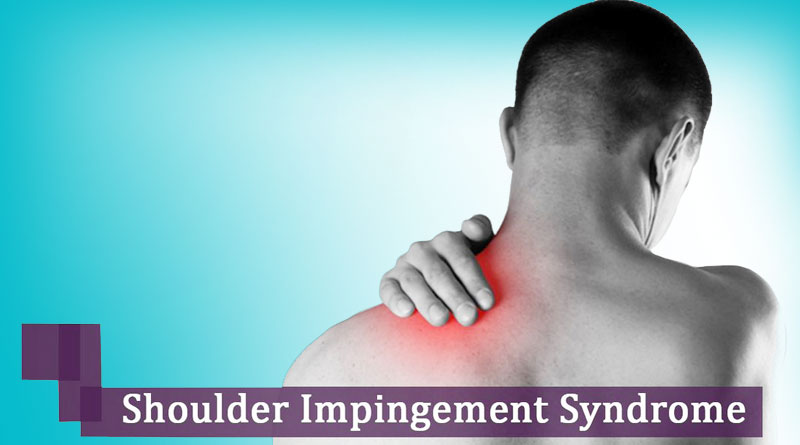Shoulder Impingement Syndrome.
By: Charles Lascano, MD CAQSM.
Sports Medicine Specialist. Sanitas Medical Centers
Shoulder impingement syndrome is a condition that causes pain in the shoulder. It happens when a tendon or bursa in the shoulder gets squeezed between the bones that make up the shoulder. It is the most common cause of shoulder pain.
Shoulder impingement is especially common among people who do repetitive activities that involve raising their arms to or above shoulder level. This condition is common in both young athletes and middle-aged people. Young athletes who use their arms overhead for swimming, baseball, and tennis are particularly vulnerable. Those who do repetitive lifting or overhead activities using the arm, such as paper hanging, construction, or painting are also susceptible. Pain may also develop as the result of a minor injury. Sometimes, it occurs with no apparent cause.
The main shoulder impingement syndrome symptom is pain that occurs when the person lifts his or her arms overhead or reaches backward. The pain can be at the shoulder, near the top of the arm, or down the outside of the arm. Common symptoms at an early stage include minor pain that is present both with activity and at rest, pain radiating from the front of the shoulder to the side of the arm or sudden pain with lifting and reaching movements. Athletes in overhead sports may have pain when throwing or serving a tennis ball. Common symptoms at a more advanced stage include pain at night, loss of strength and motion, and difficulty doing activities that place the arm behind the back, such as buttoning or zippering.

The diagnosis of this condition is made clinically by a good physical examination and appropriate analysis of the symptoms by a clinical provider trained to diagnose and treat this condition. People with suspected shoulder impingement syndrome do not typically need radiographs, but radiographs of the shoulder can sometimes help with the diagnosis and are frequently ordered by the medical providers who treat this condition. Magnetic resonance images (MRIs) are reserved for people who do not get better after initial treatment or for people who appear to have certain types of injuries or structural abnormalities that would require a different treatment like surgery.
Patients with shoulder impingement can concurrently develop what it is commonly called as a “pinched nerve” which occurs when a nerve in the neck is compressed or irritated where it branches away from the spinal cord. This may cause pain that radiates into the shoulder, as well as muscle weakness and numbness that travels down the arm and into the hand. The neck problem also should be treated when this happens.
When symptoms of shoulder impingement first start, you should avoid activities that bring on the pain. You should also ice the shoulder. In addition, if necessary you can take over-the-counter pain medications like Acetaminophen (Tylenol), Naproxen (Aleve), or Ibuprofen (Motrin or Advil) but only on an as-needed basis. You should consult your medical provider before taking any of these medications because many medications typically used for pain and inflammation like Motrin can raise your blood pressure, cause stomach upset, and many other side effects.
Usually, the most important treatment for impingement syndrome is the rehabilitation, which includes going to a physical therapy center and a home exercise program. A rehabilitation program for this condition should focus first on restoring mobility, then on strengthening the muscles that stabilize the shoulder blade, and later on regaining overall strength and function. A qualified physical therapist or occupational therapist can work with your healthcare provider to design and implement an effective rehabilitation program.
The primary care provider should prescribe the physical therapy, the needed medications, and order the necessary imaging studies before considering referral to a specialist.
The shoulder specialist may suggest injections of medications called glucocorticoids, which are mixed with anesthetics, and are known commonly as “steroids”, directly into the shoulder. Steroids help to relieve pain and swelling, and consequently, they can make it easier to do physical therapy. Also, these injections can be used as a diagnostic tool to confirm the presence of shoulder impingement causing the pain.
When nonsurgical treatment does not relieve pain, your doctor may recommend surgery which can be performed using either an arthroscopic or open technique.

